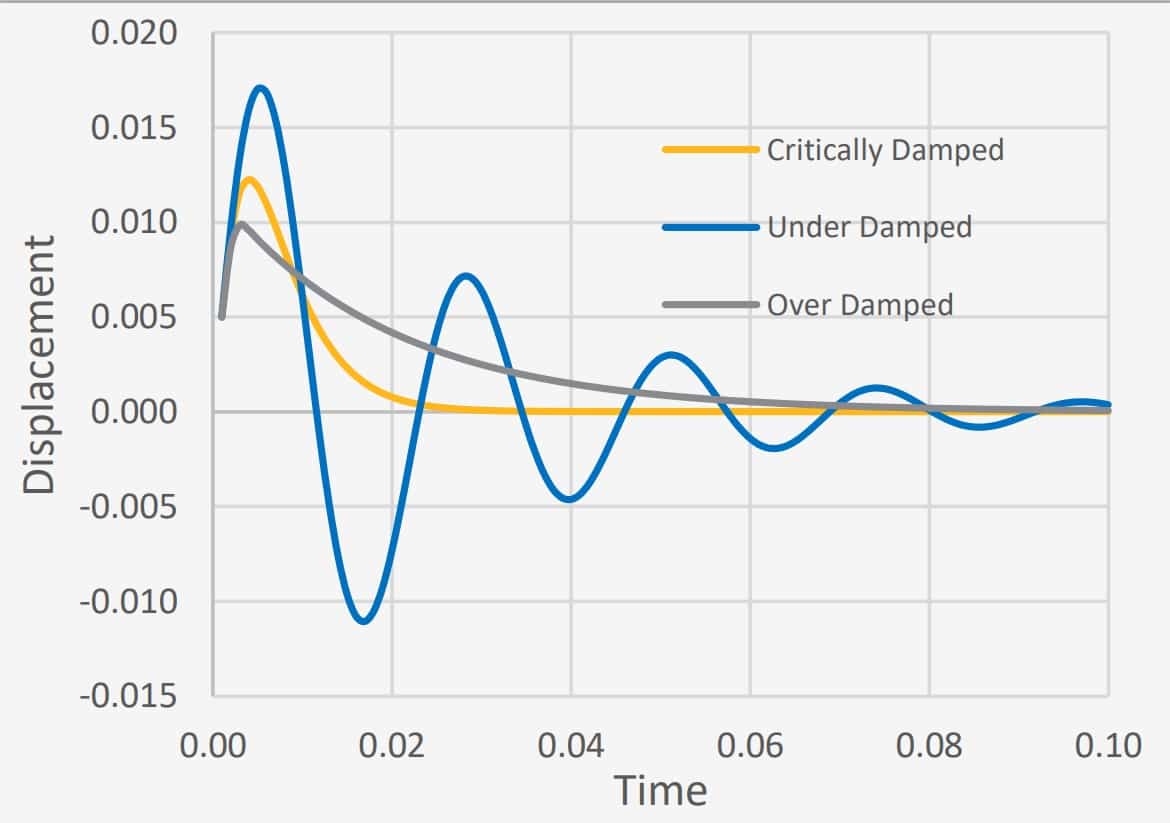If you create a cylindrical or revolute joint in ANSYS Mechanical, you get the option to define values for torsional stiffness and torsional damping.
Here is the difference between the two, as defined by ANSYS workbench manual:
Torsional Stiffness:
“The Torsional Stiffness property defines the measure of the resistance of a shaft to a twisting or torsional force. You can add torsional stiffness only for cylindrical and revolute joints.”
The torsional stiffness is similar to “regular” stiffness (stiffness as defined by Hooke’s law). The main difference between the two being that Hooke’s stiffness is Force per unit length (N/m), and torsional stiffness is Moment per unit angle (Nm / degree).
Torsional Damping:
“The Torsional Damping property defines the measure of resistance to the angular vibration to a shaft or body along its axis of rotation. You can add torsional damping only for cylindrical and revolute joints.”
You can think of a damping torque associated with the torsional damping – T = kω where ω is angular velocity with units of degrees / s. Then k is the torsional damping, with units of Moment.Time / Angle (Nm.s / degree)
